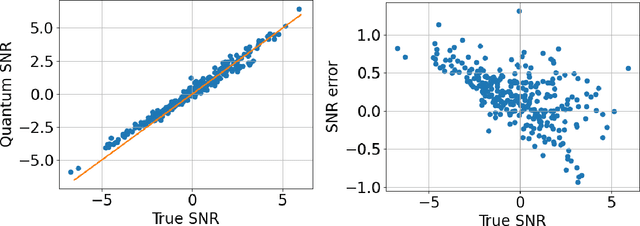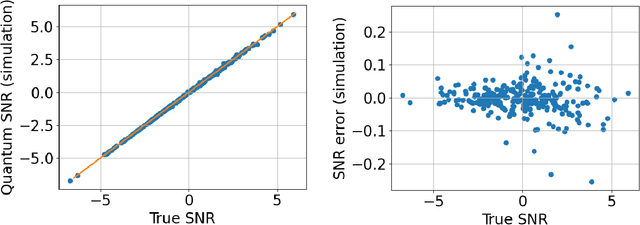Mirko Amico
Enhanced Prediction of CAR T-Cell Cytotoxicity with Quantum-Kernel Methods
Jul 30, 2025Abstract:Chimeric antigen receptor (CAR) T-cells are T-cells engineered to recognize and kill specific tumor cells. Through their extracellular domains, CAR T-cells bind tumor cell antigens which triggers CAR T activation and proliferation. These processes are regulated by co-stimulatory domains present in the intracellular region of the CAR T-cell. Through integrating novel signaling components into the co-stimulatory domains, it is possible to modify CAR T-cell phenotype. Identifying and experimentally testing new CAR constructs based on libraries of co-stimulatory domains is nontrivial given the vast combinatorial space defined by such libraries. This leads to a highly data constrained, poorly explored combinatorial problem, where the experiments undersample all possible combinations. We propose a quantum approach using a Projected Quantum Kernel (PQK) to address this challenge. PQK operates by embedding classical data into a high dimensional Hilbert space and employs a kernel method to measure sample similarity. Using 61 qubits on a gate-based quantum computer, we demonstrate the largest PQK application to date and an enhancement in the classification performance over purely classical machine learning methods for CAR T cytotoxicity prediction. Importantly, we show improved learning for specific signaling domains and domain positions, particularly where there was lower information highlighting the potential for quantum computing in data-constrained problems.
Quantum encoding is suitable for matched filtering
Apr 08, 2022


Abstract:Matched filtering is a powerful signal searching technique used in several employments from radar and communications applications to gravitational-wave detection. Here we devise a method for matched filtering with the use of quantum bits. Our method's asymptotic time complexity does not depend on template length and, including encoding, is $\mathcal{O}(L(\log_2L)^2)$ for a data with length $L$ and a template with length $N$, which is classically $\mathcal{O}(NL)$. Hence our method has superior time complexity over the classical computation for long templates. We demonstrate our method with real quantum hardware on 4 qubits and also with simulations.
 Add to Chrome
Add to Chrome Add to Firefox
Add to Firefox Add to Edge
Add to Edge